In the north-west of Ireland there is a bay with 365 islands. One for every day, at least according to legend. This is Clew Bay. The coastal road along Clew Bay takes you past an old monastery, which is largely surrounded by water at high tide…
Page Contents (click line to jump the text)
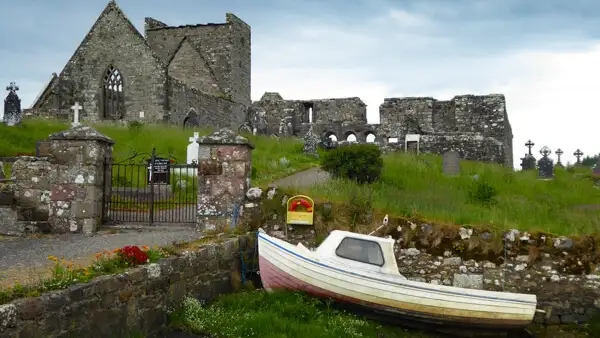
Intro
Yes, I know, another derelict abbey…. Considering that I’m not really interested in ecclesiastical art or architecture, there are a surprising number of ruined abbeys on my blog….
But Burrishoole Abbey has taken my fancy and stuck in my mind, so why not write about it?
If you’re travelling in the North West of Ireland, you might find yourself heading north past Newport.
Just a short distance outside Newport is the old Abbey on the waterfront. It is probably not quite the salty waters of the Atlantic that wash the shores of Burrishoole Abbey, but rather the mouth of the Strahmore River, which fills Lough Feeagh with water and then pours into Clew Bay.
But Clew Bay, with its many scattered islands, begins just behind the Abbey, following the estuary for a short distance and the tide regularly pushes salty water into the estuary.
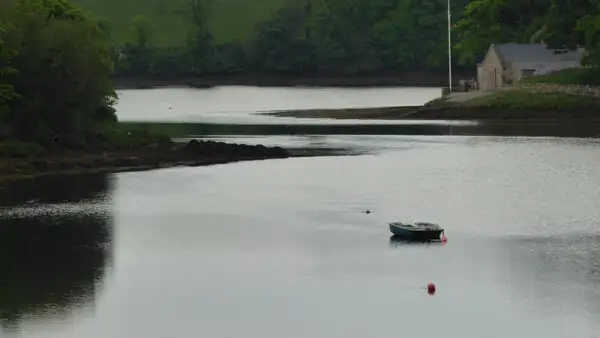
And so you will see many small fishing boats moored around the Abbey, including some sailing boats that use this sheltered estuary as an anchorage.
It is a picturesque sight to look out over the water past a Celtic cross and see fishing boats bobbing through the ruined arched church windows.
The scenery is made a little livelier by the colourful sightings of seabirds and inland water birds that can be found here: Gulls and terns circle above the boats and swans, cormorants and coots paddle eagerly back and forth between the boats and the shore – two worlds collide – the salty and the sweet…
Apart from the feathered life, I’m pretty much alone here. Once a car comes along, people get out, take a photo, get in and drive on. Peace surrounds me again and I have time to take a closer look.
The old wrought-iron gate is locked with a chain, but there is a narrow passage in the low monastery wall and a footpath, which I interpret as an invitation.
Around the old walls of the medieval abbey are old crosses, including several beautiful Celtic crosses. The new cemetery has been given its own area, right next door.
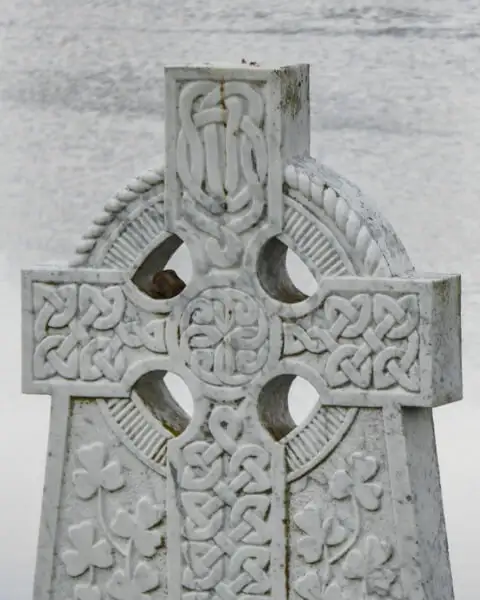
“The Abbey has a wonderful view of the river,” I keep thinking. And vice versa: for the fishermen, the Abbey must also look great from the water.
I walk on, explore another roofless wing and tombstones with ornate inscriptions inside the church and take another walk around the outside of the small complex.
With all the photos, the stopover probably took less than an hour. I don’t know exactly, because when I explore beautiful places, I forget the time.
And that is perhaps one of the best lessons that this beautiful old abbey right by the water wants to teach us: all beauty is fleeting, but some beauty is also timeless – and that is something special…

Some background to Burrishoole Abbey
In 1470, Richard de Burgo of Turlough built Burrishoole Abbey as a Dominican monastery.
He was lord of the surrounding lands, a title he later relinquished to live out the rest of his days as a monk with the Dominicans in his own abbey. This was how the pious nobles of the time secured access to the kingdom of heaven, and there are other examples besides Richard de Burgo.
However, he had done the maths without the landlord, or in this case without Pope Paul II, whom he had not asked for permission, and so the sword of Damocles, the threat of excommunication, hovered over the Dominican monks of Burrishoole for a long time.
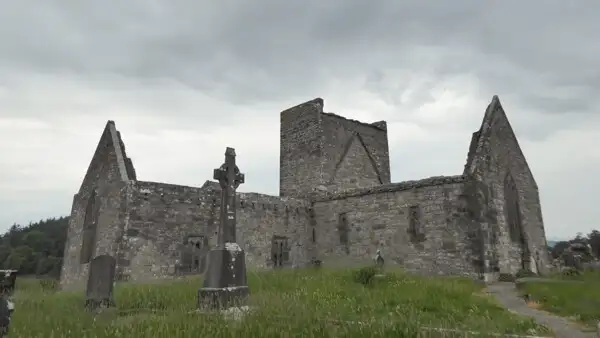
After all, it took eighteen years until the successor in office, Pope Innocent VIII. forgave the Dominicans and thus subsequently legitimised the monastery.
All that remains of the monastery today is the church and the east wall of the monastery extension. It can be assumed that there were also wooden outbuildings that fell victim to time.
Many monasteries in Ireland fell victim to the destruction of the English Reformation in the 16th century and were not rebuilt later – and this is probably what happened here too.
The English ruled the island of Ireland at the time and tried to suppress any competing secular and ecclesiastical power structures. They had a lot of success with this for a while, until the Irish rebellions against English rule grew stronger and stronger, but that’s another story….
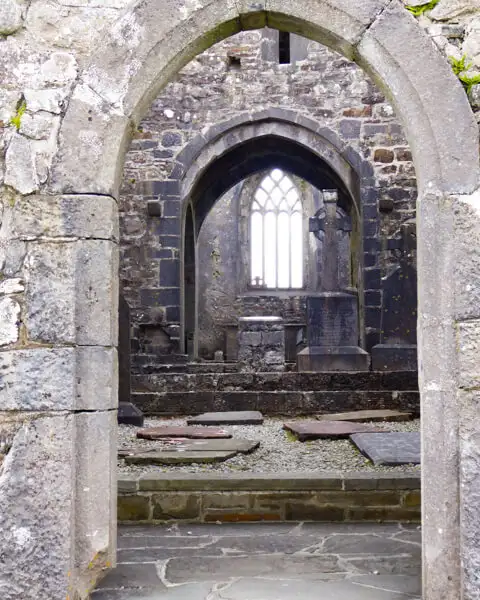
What else you can see in the area
The small town of Westport is a great place to spend the night on your round trip. It has a good selection of accommodation and restaurants and a nice little town centre around the old fountain. See: https://westporttourism.com.
On the southern shore of Clew Bay lies the holy mountain of the Irish, Croagh Patrick. Every year, many people make a pilgrimage to the mountain and the chapel at the summit. You can also climb the mountain to enjoy an incredible view of the beautiful Clew Bay and its many islands.
A few kilometres further north is the Ballycroy and Wild Nephin National Park with its unique flora and fauna and many beautiful hiking trails. See: https://www.nationalparks.ie/wild-nephin/.
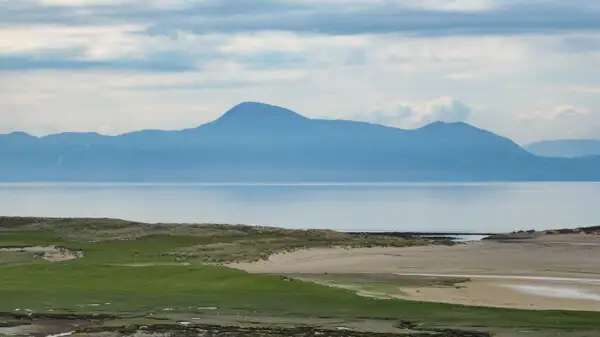
Conclusion
Sometimes pearls lie by the roadside – Burrishoole Abbey is one such pearl in the north-west of Ireland. It is not one of the breathtakingly fantastic sights that everyone is talking about, but it is still worth a short visit – or perhaps because of it!
The location of the old ruins right on the water is beautiful and you can relax, enjoy and explore here – exactly what you need on a trip in between.
I wish you a great trip to Ireland’s north-west and a wonderful hour at Burrishoole Abbey.
More interesting articles for you
KYLEMORE ABBEY IN CONNEMARA
AUGHNANURE CASTLE IN CONNEMARA – A WELL HIDDEN GEM
THE CÉIDE FILEDS – LONG BEFORE THE CELTS
ROUND TRIP IN THE NORTH OF IRELAND WITH DAY HIKES – 8 GREAT IDEAS FOR YOU
Picture credits cover picture: Burrishoole Abbey, photo: Ulrich Knüppel-Gertberg (www.irland-insider.de, www.ireland-insider.com)